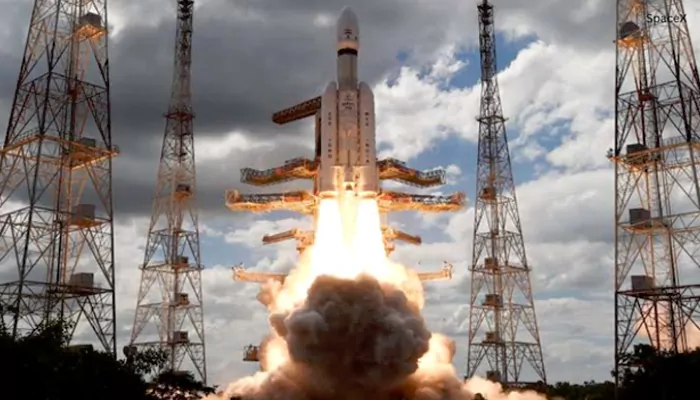How ISRO's RLV is Set to Pioneer Eco-Friendly Space Travel with Lower Emissions
- Admin
- 1 year ago
- 4 minutes read

The Indian Space Research Organisation (ISRO) is on the brink of a major advancement in its Reusable Launch Vehicle (RLV) programme with the upcoming third and final landing experiment (RLV LEX). This mission is designed to propel ISRO's initiatives in creating more affordable and efficient technologies for space travel.
As the space race intensifies in the 21st century, the environmental impact of launching rockets into space has come under scrutiny. Traditional expendable launch systems, while pioneering human space exploration, leave a significant ecological footprint. They contribute to space debris and emit considerable amounts of carbon dioxide (CO₂) into the atmosphere. In contrast, reusable launch vehicles (RLVs) offer a promising solution to mitigate these environmental issues. The Indian Space Research Organisation (ISRO), known for its cost-effective and innovative space missions, is at the forefront of developing RLV technology. This commitment not only advances space exploration but also underscores a dedication to sustainability.
Space Debris: A Growing Concern
Space debris, also known as space junk, consists of defunct satellites, spent rocket stages, and other fragments resulting from disintegration, collisions, or decay of objects in orbit. This debris poses a threat to operational satellites, space stations, and future missions. Traditional expendable launch vehicles contribute significantly to this problem. Each launch leaves behind rocket stages and other components that can remain in orbit for decades, increasing the risk of collisions.
RLVs, however, offer a game-changing approach. By design, RLVs are intended to return to Earth after delivering their payloads, thereby drastically reducing the amount of debris left in space. SpaceX's Falcon 9 and Blue Origin's New Shepard are prime examples of how RLVs can be successfully reused multiple times, minimizing space debris. ISRO's RLV programme aims to achieve similar success, ensuring that India's space missions are not only efficient but also environmentally responsible.
Lower Carbon Emissions
The environmental benefits of RLVs extend beyond space debris reduction. The process of launching a rocket involves burning large amounts of propellant, which releases CO₂ and other greenhouse gases into the atmosphere. Expendable launch systems, used only once, necessitate the manufacturing of new rockets for each mission, leading to higher cumulative emissions from both production and launches.
In contrast, RLVs are designed for multiple uses, significantly reducing the need for new rockets and the associated emissions. The reusability factor means that fewer rockets need to be built and launched, which translates to a lower overall carbon footprint. For instance, SpaceX's reusable rockets have been shown to cut down CO₂ emissions by reducing the frequency of new rocket constructions and launches.
ISRO's commitment to developing RLVs is a step towards reducing India's space exploration carbon footprint.
ISRO's Commitment to Sustainable Space Exploration
ISRO has a long-standing reputation for innovation and cost-efficiency in its space missions. The development of RLV technology is a natural progression of this legacy. ISRO's RLV-TD (Reusable Launch Vehicle-Technology Demonstrator) programme has already made significant strides, successfully testing various aspects of reusability, including atmospheric re-entry and autonomous landing.
The upcoming third and final landing experiment (RLV LEX) represents a crucial milestone in ISRO's efforts. This experiment aims to validate the technologies necessary for a fully operational RLV.
The transition from expendable to reusable launch vehicles marks a significant advancement in sustainable space exploration. RLVs offer a dual benefit of reducing space debris and lowering carbon emissions, addressing two major environmental concerns associated with rocket launches. ISRO's dedication to developing RLV technology exemplifies its forward-thinking approach, balancing the ambitions of space exploration with the imperative of environmental stewardship. As the RLV programme progresses, it holds the promise of setting new standards for eco-friendly space missions, ensuring that the pursuit of knowledge beyond our planet does not come at the cost of our environment.


.WEBP)









